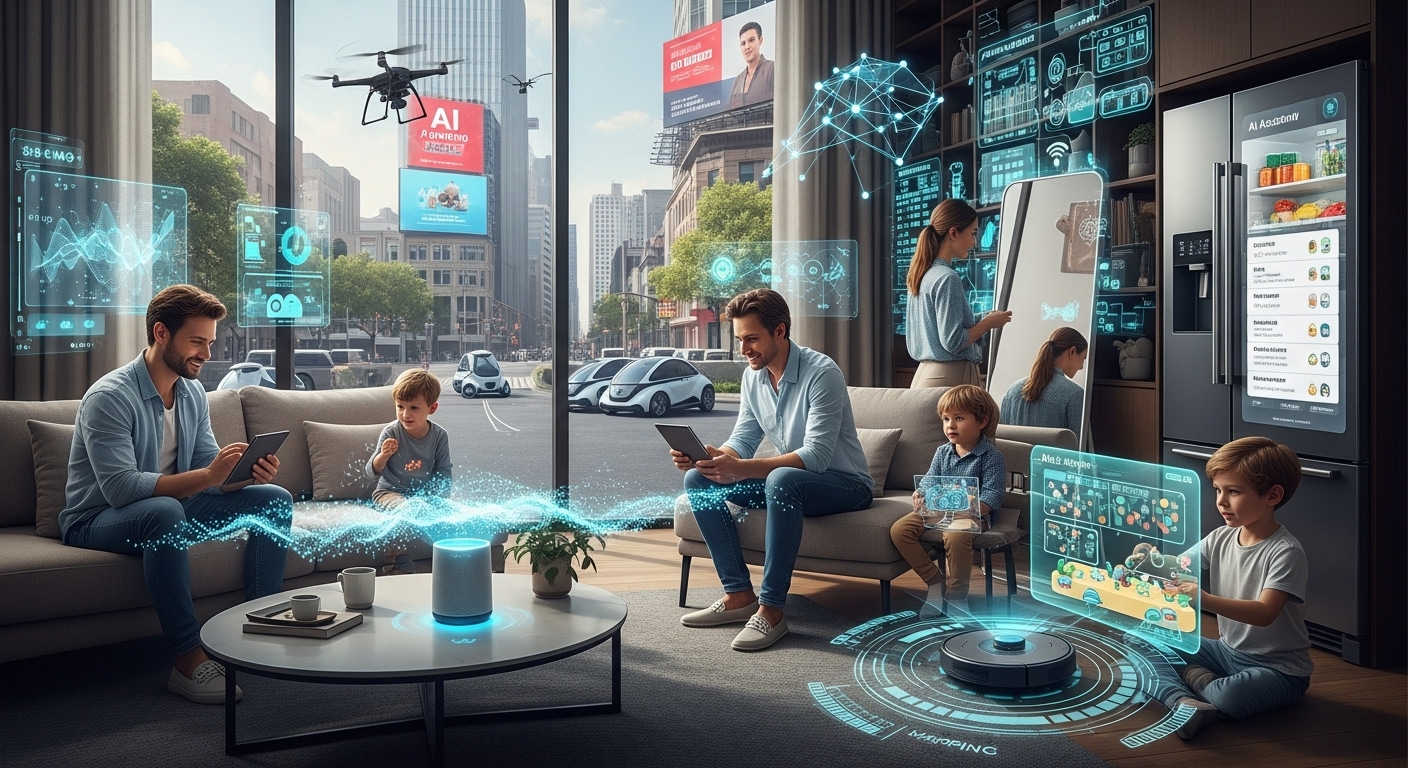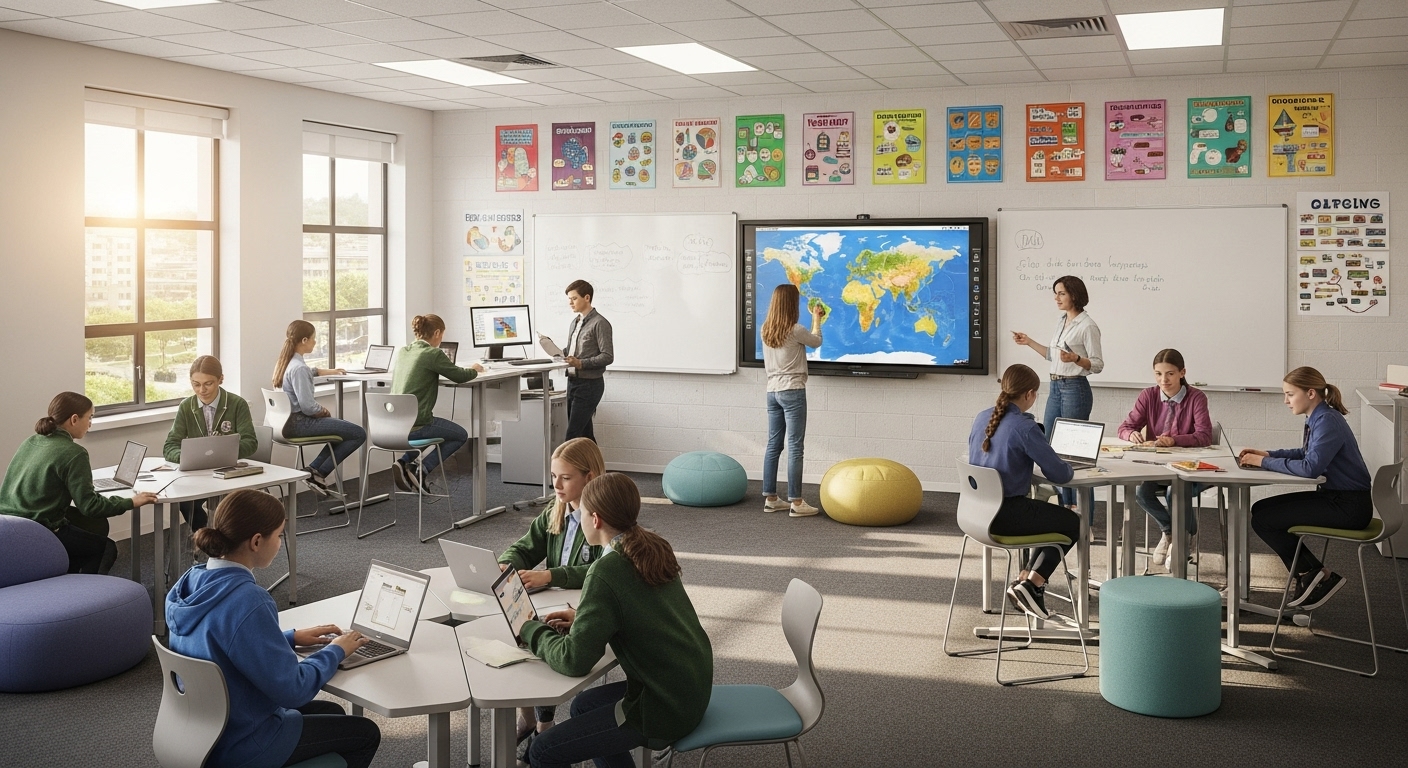Introduction
Artificial intelligence, commonly referred to as AI, has quickly become one of the most transformative forces of the modern era. What was once a concept confined to science fiction and theoretical research is now a practical reality shaping the way people live, work, and interact with the world. From smartphones and smart homes to healthcare, education, entertainment, and finance, AI is deeply embedded in daily life in ways many may not even realize. The rise of AI in daily life is not just about technological innovation; it is about redefining human experiences, creating efficiencies, and presenting new challenges that societies must navigate.
Understanding Artificial Intelligence
At its core, artificial intelligence refers to the ability of machines to simulate human intelligence. This includes learning from data, recognizing patterns, solving problems, making decisions, and even adapting to new circumstances. AI is not a single technology but a broad field encompassing machine learning, natural language processing, computer vision, robotics, and neural networks. These technologies work together to give machines capabilities that were once thought to be uniquely human.
The rise of AI in daily life stems from advances in computing power, the availability of massive datasets, and improvements in algorithms. Together, these elements have allowed AI systems to achieve remarkable accuracy and efficiency in tasks ranging from speech recognition to medical diagnosis. While AI may seem invisible at times, its influence is everywhere, woven into the fabric of modern routines and choices.
AI in Communication
One of the most visible applications of AI in daily life is in communication. Digital assistants like those found on smartphones and smart speakers use natural language processing to understand and respond to voice commands. These assistants can send messages, make phone calls, provide weather updates, and even control household devices. Chatbots on websites and customer service platforms are powered by AI to provide instant responses and assistance to users, reducing wait times and improving service.
AI also plays a key role in translation services. Tools that translate text or speech from one language to another in real time have made global communication easier than ever. This has broken down barriers between cultures, enabling people from different parts of the world to connect seamlessly. For businesses, it has expanded opportunities to reach international audiences and collaborate across borders.
AI in Education
The education sector has been significantly influenced by the rise of AI. Personalized learning platforms use AI to analyze a student’s strengths and weaknesses, tailoring lessons to suit individual needs. This approach moves away from the one-size-fits-all model of education and helps students learn at their own pace. Virtual tutors and AI-driven educational apps can provide additional support outside of the classroom, making learning more accessible to a wider audience.
AI also assists teachers by automating administrative tasks such as grading assignments and managing records. This allows educators to focus more on teaching and engaging with students. In addition, AI-driven analytics can help institutions identify patterns in student performance, enabling them to provide targeted interventions and improve outcomes.
AI in Healthcare
Healthcare is one of the fields where AI has made some of the most life-changing contributions. AI systems are used to analyze medical images, detect diseases, and even recommend treatment plans. In diagnostics, AI can identify patterns in scans and lab results with a level of accuracy that rivals or even surpasses human doctors. This has been particularly valuable in detecting conditions like cancer at earlier stages, where timely intervention can save lives.
AI also powers wearable devices that monitor health in real time. Smartwatches and fitness trackers can measure heart rate, sleep patterns, and physical activity, alerting users to potential health concerns. In hospitals, AI-driven robots assist in surgeries by providing precise and minimally invasive procedures. Additionally, AI is helping researchers develop new drugs by analyzing massive datasets to identify promising compounds faster than traditional methods.
AI in Transportation
Transportation has been revolutionized by AI, particularly with the development of self-driving vehicles. Autonomous cars use AI to interpret data from sensors, cameras, and GPS systems, allowing them to navigate roads, detect obstacles, and make decisions in real time. While fully autonomous cars are still being tested, features such as adaptive cruise control, lane-keeping assistance, and automatic braking are already common in modern vehicles.
AI is also central to traffic management systems in many cities. By analyzing traffic data, AI helps optimize traffic lights, reduce congestion, and improve road safety. In public transportation, AI enhances scheduling, predicts delays, and improves efficiency for both operators and passengers. These applications not only make travel more convenient but also contribute to reducing emissions and improving sustainability.
AI in Entertainment
Entertainment has been reshaped by the integration of AI into music, movies, and gaming. Streaming platforms use AI algorithms to recommend movies, shows, or songs based on individual preferences, creating a highly personalized experience. In gaming, AI is used to create more realistic non-player characters and dynamic storylines that adapt to a player’s choices. This has taken gaming from a static experience to one that feels interactive and immersive.
AI is also being used to create content. Musicians are experimenting with AI-generated compositions, filmmakers are using AI tools to enhance special effects, and writers are collaborating with AI to generate stories. These developments raise questions about creativity and originality but also demonstrate the versatility of AI in shaping culture and entertainment.
AI in Smart Homes
The concept of the smart home has become a reality thanks to AI. Smart home devices such as thermostats, lighting systems, and security cameras use AI to learn from user behavior and automate tasks. For instance, a smart thermostat can learn a household’s routine and adjust the temperature accordingly to save energy. AI-powered security systems can recognize familiar faces and detect unusual activity, providing enhanced safety.
Voice-controlled assistants integrate these devices, allowing users to manage their homes effortlessly. The convenience of smart homes has improved quality of life for many people, offering comfort, energy efficiency, and peace of mind. However, it also raises concerns about data privacy and the extent to which people are willing to rely on AI for managing their personal spaces.
AI in Finance
The financial sector has embraced AI to improve efficiency, security, and customer service. Banks and financial institutions use AI to detect fraudulent transactions by analyzing patterns and anomalies in real time. This proactive approach has significantly reduced financial crime and increased trust in digital banking.
AI also powers robo-advisors, which provide automated financial advice and portfolio management based on user goals and risk tolerance. These services make investing more accessible, especially for individuals who may not have access to traditional financial advisors. Additionally, AI-driven chatbots provide instant customer support, helping users manage accounts, process payments, and answer questions without human intervention.
AI in Shopping and Retail
Shopping experiences have been transformed by AI. Online retailers use recommendation engines to suggest products based on browsing and purchasing history, creating a personalized shopping journey. Virtual assistants help customers find items, compare prices, and even try products through augmented reality features.
In physical stores, AI-powered systems monitor inventory, track customer preferences, and optimize supply chains. Some retailers have even introduced cashier-less stores, where AI and sensors track purchases and automatically charge customers without the need for traditional checkout lines. These innovations streamline operations and enhance convenience for both businesses and consumers.
AI in Workplaces
AI has also entered the workplace, changing how people perform tasks and interact with colleagues. Automation powered by AI has reduced the need for repetitive and manual tasks, allowing employees to focus on higher-level work. For example, AI can process invoices, schedule meetings, and manage workflows, freeing up valuable time.
In recruitment, AI analyzes resumes, evaluates candidates, and even conducts preliminary interviews through chatbots. This has made the hiring process more efficient, though it also raises ethical questions about bias in AI systems. Collaboration tools powered by AI improve communication in remote work environments, enabling teams across the globe to stay connected and productive.
Ethical Challenges of AI
While the rise of AI in daily life brings enormous benefits, it also presents significant challenges. One of the most pressing concerns is privacy. AI systems rely on vast amounts of personal data to function effectively, raising questions about how this data is collected, stored, and used. There are also concerns about bias in AI algorithms, as these systems can reflect and reinforce societal inequalities if not carefully designed and monitored.
Another major issue is job displacement. As AI continues to automate tasks, there is a fear that many traditional roles will become obsolete. While AI is likely to create new opportunities, the transition may be difficult for workers in industries heavily affected by automation. Governments, businesses, and educational institutions must work together to ensure that the workforce is prepared for these changes through retraining and reskilling programs.
The Future of AI in Daily Life
Looking forward, the influence of AI in daily life is expected to grow even more profound. Advances in natural language processing, robotics, and machine learning will create systems that are more capable, adaptable, and integrated into society. Smart cities powered by AI will manage energy, transportation, and infrastructure more efficiently, creating sustainable and livable environments.
In healthcare, AI may play a central role in personalized medicine, where treatments are tailored to the unique genetic makeup of individuals. In education, AI could democratize access to learning by providing high-quality resources to underserved communities. As these technologies evolve, people will need to balance innovation with ethical responsibility, ensuring that AI serves humanity rather than undermining it.
Conclusion
The rise of AI in daily life is one of the defining stories of the modern era. From communication and healthcare to entertainment and finance, AI has become an inseparable part of human existence. It offers convenience, efficiency, and innovation while also posing challenges that must be addressed responsibly. The integration of AI into everyday routines demonstrates the potential of technology to enhance lives, but it also reminds us of the importance of guiding its development with foresight and care.
Artificial intelligence is not just a tool; it is a transformative force shaping the future of society. As its role continues to expand, the choices made today about how to use, regulate, and govern AI will determine the kind of world that future generations inherit. By embracing AI with responsibility and vision, humanity can ensure that its rise leads not only to technological progress but also to a more inclusive, ethical, and sustainable future.


